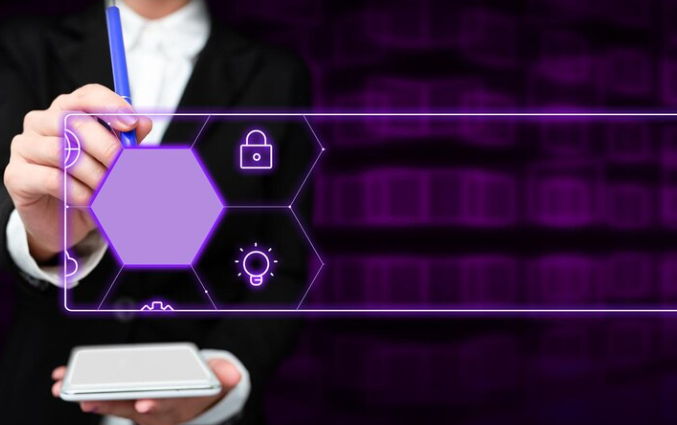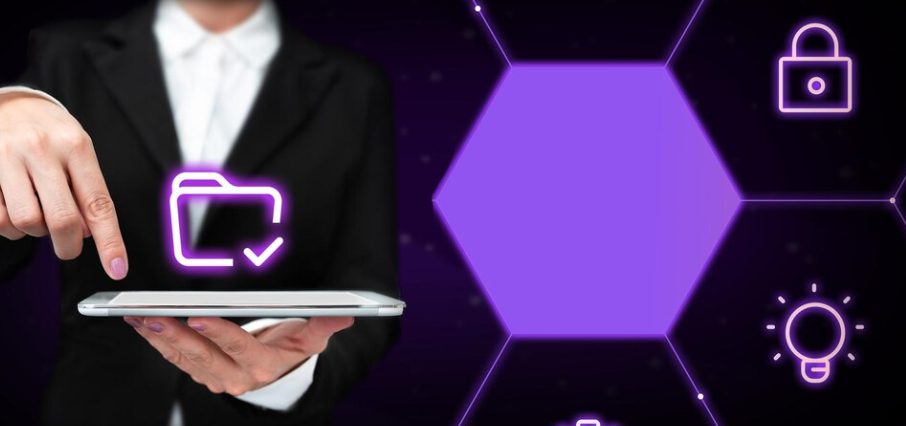Securing AI-generated web apps requires a focused approach that combines strong authentication, robust access controls, and real-time threat detection. These applications often handle sensitive data and interact with diverse datasets, making it essential to safeguard against vulnerabilities like prompt injection and unauthorized access. Implementing adaptive security policies and continuous monitoring is critical to maintaining the integrity of AI-driven web services.
Developers must understand the specific risks associated with AI workloads and design security measures tailored to these challenges. This includes encryption, compliance with data privacy regulations, and regular security audits to identify weak points. By prioritizing security from the start, organizations can protect both their users and their business infrastructure effectively.
Understanding Security Challenges in AI-Generated Web Apps

AI-generated web applications introduce distinct security concerns tied to automated code creation and deployment. These challenges require close examination of development models, threat landscapes, and the inherent risks AI-driven approaches present compared to traditional methods.
Unique Security Risks of AI-Driven Development
AI-driven development often relies on tools like Imagine.bo or AI-Generated Blueprint to automate coding tasks. While this accelerates production, it exposes applications to insecure code generation, where AI models may introduce vulnerabilities unintentionally.
One key risk is dependency on AI training data that may contain outdated or flawed code patterns, leading to repeat vulnerabilities. Additionally, lack of transparency in AI decision-making processes complicates vulnerability detection.
Automated code may also include sensitive data leakage if AI tools improperly handle credentials or user data embedded during generation. Rigorous inspection and testing are necessary to guard against these risks.
Differences Between Traditional and AI-Generated Applications
Traditional development involves manual coding with direct human oversight, allowing developers to apply security best practices consistently. AI-generated apps, however, depend on models that produce code autonomously, reducing direct human scrutiny on every line.
This shift alters the attack surface: AI-generated apps may have unexpected or inconsistent security patterns. Unlike human developers, AI may not always consider context-specific security nuances or organizational compliance requirements.
Moreover, AI often accelerates release cycles, increasing the chance of insufficient testing. Traditional apps typically undergo thorough security reviews which might be reduced or fragmented in AI-generated workflows.
Common Threats Facing Automated App Creation
Automated app creation is vulnerable to several threats:
- Insecure AI-generated code: Common coding flaws such as SQL injection or cross-site scripting can be introduced if AI models are not properly constrained.
- Shadow AI use: Unauthorized use of AI tools outside official governance can lead to unvetted, insecure applications.
- Data exposure: AI’s interaction with potentially sensitive training data or embedded secrets risks accidental disclosure.
- Supply chain attacks: Reliance on external AI libraries and APIs can introduce indirect vulnerabilities.
Security measures must include strict code audits, integration of static and dynamic analysis, and governance frameworks that control AI tool usage.
Key Principles of Securing AI-Generated Web Apps
Securing AI-generated web applications requires focused strategies that address both the design and operational phases. It involves embedding security early, adhering to regulatory standards, and continuously validating the app’s defenses through automation.
Security by Design for Zero-Code Platforms
Zero-code platforms simplify app creation but introduce unique security concerns. Security must be integrated from the start to limit vulnerabilities inherent in automatically generated code. This includes enforcing strict access controls and input validation to prevent common attacks like injection or cross-site scripting.
Developers should implement segmented permissions to ensure that users can only interact with necessary components. Cloud-native security controls, such as identity management and encrypted data storage, are essential. Regular monitoring for anomalous behavior helps detect potential breaches early within these automated environments.
Ensuring GDPR and SOC2 Compliance
Compliance with GDPR and SOC2 is fundamental for AI web apps handling personal or sensitive data. GDPR demands transparent data processing, user consent management, and robust data protection mechanisms to safeguard privacy.
SOC2 focuses on operational controls related to security, availability, confidentiality, and processing integrity. Organizations must document and enforce policies on data access, incident response, and security governance. Automated logging and audit trails enable continuous compliance verification, supporting both internal reviews and external audits.
Role of Automated Security Checks
Automated security checks are critical for maintaining consistent security posture in AI-generated applications. These tools perform vulnerability scans, code analysis, and penetration testing without human bias or delay.
Automation ensures that security assessments keep pace with rapid app updates typical in generative AI workflows. It enables early detection of weaknesses and enforces compliance with regulatory frameworks like GDPR and SOC2. Integration of security checks in CI/CD pipelines streamlines risk management and minimizes manual oversight.
Infrastructure and Deployment Security
Securing AI-generated web apps starts with a strong, scalable infrastructure that can handle dynamic workloads while maintaining strict access controls. Deployment environments must focus on minimizing attack surfaces and ensuring data integrity throughout development and runtime.
Scalable Cloud Deployment Options
Choosing scalable infrastructure is critical for AI web apps, as demand often fluctuates significantly. Cloud platforms like AWS, GCP, and Vercel offer managed services that automatically scale compute and storage resources on demand.
AWS provides flexible compute options through EC2 and serverless Lambda functions, combined with robust identity and access management (IAM) for fine-grained control. GCP offers similar scalability with Compute Engine and App Engine, emphasizing strong network security and encryption by default.
Vercel specializes in front-end hosting with global edge networks, optimizing content delivery and response times. Its integration with CI/CD workflows enforces smooth updates with minimal downtime.
Each platform supports multi-region deployment, enabling redundancy and reducing latency risks while protecting against regional failures.
Best Practices for Securing AWS, GCP, and Vercel Deployments
Security measures must be embedded at every deployment step. On AWS, enforcing least privilege access with IAM roles and regularly rotating credentials reduces insider risks. Enabling VPC isolation and using security groups limits exposure to the internet.
For GCP, applying organization policies to restrict resource creation and utilizing Cloud Armor for DDoS protection strengthens perimeter defense. Encrypting all data at rest and in transit is mandatory.
Vercel users should enable two-factor authentication (2FA) and employ environment variables for secret management instead of hardcoding keys. Monitoring deployment logs helps detect anomalies early.
Across all platforms, API security is paramount. Implementing rate limiting and authentication prevents abuse. Regular updates and patching ensure vulnerabilities are minimized.
Data Protection and User Privacy
Securing AI-generated web apps requires careful attention to how sensitive data is handled, protected during transmission, and accessed by users. Ensuring compliance with regulations like GDPR and maintaining clear user flows enhances trust and minimizes risks.
Handling Sensitive Information in AI-Generated Apps
AI-generated apps often process personal and sensitive data, which increases the risk of exposure if not managed properly. Developers must classify data types and apply appropriate safeguards such as data minimization—only collecting what is essential for the app’s function.
Data should be anonymized or pseudonymized wherever possible to limit personal identification. Logging and monitoring should track access to sensitive information to detect any unauthorized use or breaches.
Complying with GDPR requires clear user consent for data collection and transparent data usage policies. User flows must be designed to explicitly inform users about what data is collected and how it will be used, supporting both legal compliance and user trust.
Implementing End-to-End Encryption
End-to-end encryption (E2EE) protects data in transit and at rest from interception or unauthorized access. AI-generated web apps should encrypt user inputs, outputs, and stored data using strong, widely accepted cryptographic standards such as AES-256.
Encryption keys must be managed securely, ideally using hardware security modules (HSMs) or key management services that separate key storage from application access.
E2EE also safeguards communications between users and the AI system, preventing third parties from reading the data even if the network is compromised. This encryption fits into the full user flow, ensuring data remains secure from the point of entry to final processing.
User Authentication and Access Control
Robust user authentication is crucial to restrict sensitive data access to authorized individuals only. Multi-factor authentication (MFA) should be implemented to enhance login security, requiring two or more verification methods.
Role-based access control (RBAC) limits user permissions based on their role within the app, preventing unnecessary access to sensitive information or administrative functions. It also simplifies compliance with regulations by enforcing least privilege principles.
User sessions should use secure tokens with reasonable expiration and renewal policies to prevent session hijacking. Regular audits of user activity and permission reviews help maintain secure, compliant access controls over time.
Continuous Monitoring and Threat Detection
Effective continuous monitoring involves real-time data analysis and rapid identification of anomalies to maintain the security of AI-generated web apps. Threat detection must be systematic and integrate advanced tools to ensure vigilance against evolving attack vectors.
Integrating Analytics Dashboards for Security Insights
Analytics dashboards consolidate diverse security data into a centralized interface, enabling teams to track key metrics such as unusual login attempts, API anomalies, and data access patterns. These dashboards should support customizable alerts based on predefined thresholds to immediately flag suspicious activity.
Using professional-grade quality dashboards with intuitive visualization tools enhances situational awareness. Features like trend analysis help identify emerging threats before they escalate. Effective integration requires seamless connectivity with data sources, including web app logs, network traffic, and AI behavior analytics.
Dashboard insights should prioritize clarity and actionable data, reducing noise from false positives. Real-time updates paired with historical context empower security teams to make informed decisions quickly, improving incident response times.
Proactive Vulnerability Assessment
Continuous vulnerability assessment is crucial for revealing weaknesses in AI-generated web apps before adversaries exploit them. Automated scanning tools, especially those powered by AI, perform dynamic testing on APIs, web requests, and deployed models to detect flaws like injection points or misconfigurations.
Regular penetration testing complements automated scans, providing nuanced human insights on complex vulnerabilities. This combination supports ongoing risk management and adaptive defenses.
Proactive assessment also involves simulating attack scenarios to evaluate the app’s resilience. Frequent reassessment after code changes or AI model updates ensures persistent security compliance and reduces blind spots.
Responding to Security Incidents
A structured incident response plan is essential to mitigate damage when threats are detected. Automated workflows triggered by analytics dashboards should initiate containment procedures, such as isolating compromised components or blocking malicious IP addresses.
Incident handlers benefit from integration with anomaly detection systems to validate alerts and prioritize response based on risk severity. Documentation of each incident, including root cause and remediation steps, supports continuous learning and strengthens future defenses.
Effective collaboration tools connecting developers, security teams, and AI specialists accelerate resolution. Post-incident reviews should feed back into monitoring rules, refining detection capabilities continuously.
Human Oversight in Automated App Creation
Human involvement remains essential in securing AI-generated web applications. It ensures that automated processes benefit from expert judgment, limiting risks such as security vulnerabilities, bias, and operational errors.
Role of Expert Support in Securing Deployments
Expert support functions as a critical safety net in AI-driven app development. A team of engineers provides necessary expertise to review and verify AI-created code before deployment.
They monitor for potential security flaws that automated systems might overlook. This includes verifying access controls, data handling practices, and preventing privilege escalation.
Expert backup is especially important for risk assessment in complex applications where AI-generated elements interact. It guarantees that automation does not replace crucial human decision-making, maintaining the integrity and security of the web app.
Ensuring Quality with Human-in-the-Loop Processes
Human-in-the-loop (HITL) processes integrate continuous expert review throughout app creation. Rather than relying solely on one-click builds, the system actively involves engineers during critical phases, such as code generation and final testing.
This approach helps validate functionality and detect ethical or operational issues, ensuring compliance with security standards. HITL limits the chance of AI-generated errors being pushed live unnoticed.
By combining automated efficiency with human oversight, teams maintain control and accountability. This balance reduces risk and improves the quality and relevance of the final product.
Best Practices for SaaS Providers and Agencies
Securing AI-generated web apps requires precise measures in handling client data, managing multiple projects efficiently, and balancing service costs with risk. Providers and agencies must establish clear protocols to maintain security and transparency while supporting various clients and projects.
Multi-Tenancy Security for Client Projects
Ensuring strong isolation between client environments is essential. SaaS providers should implement role-based access control (RBAC) and enforce strict separation of data and resources to avoid unauthorized access between tenants.
Using encryption both in transit and at rest protects sensitive client information. Agencies must also perform regular security audits to detect vulnerabilities specific to AI components.
Providers should integrate identity management solutions that support multi-factor authentication (MFA) to bolster account security. This protects the client projects from credential theft or misuse, especially when managing AI-generated data.
Managing Multiple Projects Securely
Handling numerous client projects demands scalable processes that maintain security standards. Providers and agencies need centralized monitoring systems to track access, data flow, and abnormal activity across all projects.
Adopting automated workflows can help enforce policies like data segmentation and update patching without manual errors. Centralized logs and periodic reviews ensure compliance with security measures tailored for AI capabilities.
For solo makers or smaller agencies, leveraging cloud provider security tools reduces operational risks. These tools often include built-in encryption, intrusion detection, and compliance checks that cover multiple projects systematically.
Clear Pricing and Risk Management
Transparent pricing models allow clients and providers to understand cost implications related to security features. Agencies should clearly itemize charges for advanced protections such as encryption, audit services, and emergency response.
Clearly defined service level agreements (SLAs) help manage risk by outlining responsibilities for data breaches or AI model failures. Providers need to communicate potential risks tied to AI-generated outputs and incorporate liability clauses appropriately.
For founders and solo makers, balancing affordable pricing with necessary security investments is critical. Offering scalable options—basic to premium security—can accommodate different client risk profiles without compromising protections.
Getting Started Securely with AI-Generated Web App Platforms
Launching AI-generated web apps requires attention to secure onboarding processes and scaling strategies. Early phase controls and infrastructure readiness are critical to protect sensitive data and avoid common security pitfalls during growth.
Private Beta Onboarding and Waitlist Security
During private beta, access restrictions must be clearly defined. The waitlist should employ strict identity verification to ensure only authorized testers gain entry. This reduces risks from unauthorized access or data leaks in early testing periods.
Secure communication channels must be used for onboarding instructions, preventing interception of credentials or sensitive links. Logging and monitoring user activity helps detect unusual behavior early. Role-based access control (RBAC) limits tester permissions to only the needed features and data.
Data handled during private beta should be separated from production environments. Encryption for data both in transit and at rest is essential. Regular audits confirm compliance with security policies and help refine onboarding security before wider release.
Seamless Scaling for MVPs and Production Apps
As the app moves from MVP to production, scaling security practices must be integrated without service disruption. Automated identity and access management (IAM) solutions provide consistent permission enforcement across distributed systems.
Infrastructure should support encryption, threat detection, and anomaly monitoring at scale. Cloud-native security tools allow teams to maintain a secure posture while dynamically adjusting resources based on user load.
Maintaining a clear separation between development, staging, and production environments reduces the risk of vulnerabilities propagating. Continuous integration pipelines must include automated security scans and compliance checks to catch issues early.
| Aspect | Key Security Focus |
|---|---|
| User Access | RBAC, Identity verification, IAM automation |
| Data Protection | Encryption at rest and in transit |
| Environment Separation | Isolated dev/stage/prod environments |
| Monitoring & Logging | Anomaly detection, audit logs |
Future Trends and Considerations in AI-Powered App Security
AI-powered applications bring new demands for security solutions that adapt to evolving threats and development practices. Innovations in automated threat detection and the need to manage rapid app deployment without sacrificing security are pivotal challenges for teams today.
Evolution of AI Security Capabilities
AI security tools are advancing to detect vulnerabilities with greater speed and accuracy than traditional methods. These tools leverage machine learning to identify anomalous behavior and previously unknown threats in complex application environments.
Automation is central, allowing continuous scanning and remediation suggestions that help developers build secure coding habits over time. This creates what experts call AppSec muscle memory, improving long-term security posture.
Emerging AI-native security capabilities also include automated orchestration to coordinate responses across multiple systems quickly. This agility is critical in environments where new AI-driven apps and features proliferate rapidly, increasing the attack surface.
Balancing Rapid Development with Robust Protection
The pressure for fast AI app deployment often clashes with the time-intensive processes required for thorough security testing. Organizations must implement security automation to maintain pace without creating vulnerabilities.
Integrating AI-generated security insights into development workflows enables teams to identify and fix flaws early without bottlenecks. This approach reduces flaw density and cultivates secure habits.
However, speed alone is insufficient; without robust controls, rapid development can lead to exploitable weaknesses. Teams need clearly defined security policies and governance frameworks to balance innovation with protection.
Key considerations include:
- Embedding automated security checks in CI/CD pipelines
- Continuous risk assessment of AI components and third-party services
- Maintaining compliance with evolving standards amid Tech Chaos and complexity in SaaS ecosystems
This dual focus prepares organizations to manage the risks of AI-generated web apps while enabling efficient delivery.





